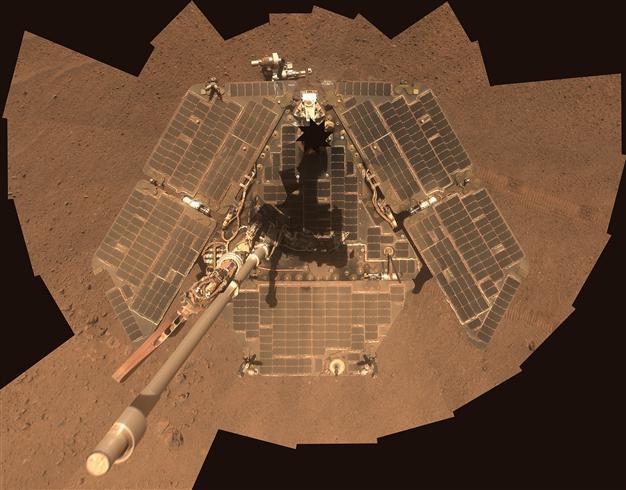NASA rover completes 11-year Mars marathon
WASHINGTON - Agence France-Presse

This NASA/JPL-Caltech/MSSS file photo shows a self-portrait of NASA's Mars Exploration Rover Opportunity. AFP Photo
NASA's Opportunity Mars rover has become the first human-made vehicle to complete a marathon on another planet -- a feat accomplished in a record time of no less than 11 years.Opportunity passed the 26-mile (42-kilometer) mark Tuesday after approximately 11 years and two months traveling the Martian terrain, where it surpassed scientists' original expectations for a mission lasting just several months.
The solar-powered robot, which landed on Mars' Eagle Crater in January 2004, completed the marathon in the course of a 153-foot (46.5-meter) drive.
"This is the first time any human enterprise has exceeded the distance of a marathon on the surface of another world," said John Callas, Opportunity project manager at NASA's Jet Propulsion Laboratory (JPL) in Pasadena, California.
During its mission, Opportunity and its twin rover, Spirit -- now defunct -- have discovered wet environmental conditions on ancient Mars, some of which are mild enough to have been favorable for life.
"This mission isn't about setting distance records, of course; it's about making scientific discoveries on Mars and inspiring future explorers to achieve even more," said Steve Squyres, Opportunity principal investigator at Cornell University.
Opportunity was given the long-term task of exploring the rim of the Endeavour Crater after its lifespan far exceeded scientists' expectations.
Last June, the robot surpassed the record for the most miles clocked by any man-made vehicle on any celestial body by beating the Soviet Union's Lunokhod 2 rover, which landed on the moon in 1973.
Meanwhile the much larger Curiosity rover, which landed on Mars in 2012, is equipped with sophisticated scientific instruments, which have shed light on the possible microbial life that may have once inhabited the Red Planet.
















